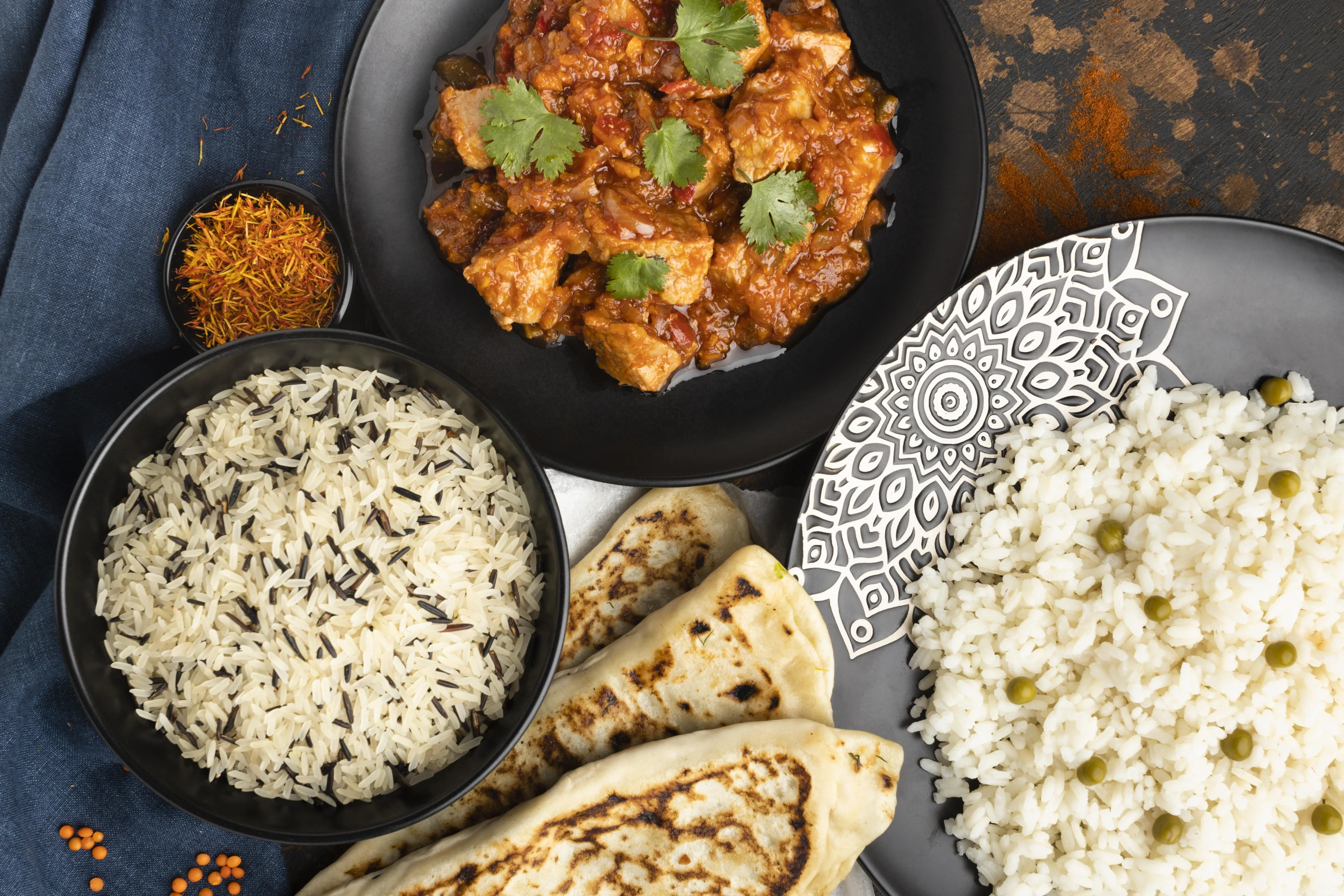Celebrating Festivals: Diwali, Holi & Special Thali Feasts - Priya Indian Cuisine
The glow of a clay lamp, the shimmer of coloured powder, and the echo of laughter around transferred table festivals don’t start with fireworks or music. They begin in the kitchen. In spices measured by memory, in batters left to rest, in sauces stirred without a timer. For Indian families across suburban Melbourne, food marks time. And when festivals return, so do the flavours that define them. There’s something sacred in the first bite of a Diwali thali or the tang of chaat on a Holi afternoon. It’s a tradition you can taste.
Diwali Feasts: A Festival of Balance
Diwali is not just sweetness; it’s contrast. A traditional festive spread isn’t heavy or overdone but purposeful. There’s ghee-roasted rice spiced with whole cloves and creamy curries cut with citrus brightness. Paneer is stewed slowly until it holds the sauce-like memory. Fried snacks, light and crisp, line the edges of copper trays. And dessert, always the closer, conveys syrup-soaked gulab jamun or pistachio-laced kaju katli. Every item is selected not for novelty but for meaning. It’s the kind of meal where families speak in glances, and hands move in rhythm over familiar plates.
Holi Plates: A Riot of Flavour
Where Diwali is composed, Holi is wild. A table set for Holi holds no symmetry. Sweet meets sour, crisp meets soft, and colour robs the show. Papdi chaat lands in bright heaps, spread with ruby pomegranate and green coriander. Dahi Bhalla softens under yogurt spiked with tamarind. There’s no order to how it’s eaten, just rhythm, just joy. Even drinks join in: thandai made with rose and fennel, cold and fragrant. What links it all together is one thing: abundance. And when the colours in the air begin to fade, the flavours are still there, lingering.

The Thali as Cultural Canvas
A thali doesn’t tell a single story. It holds many, arranged in clockwise sequence, each bowl brushing against the next like chapters in a shared book. Some are sweet, others burn quietly at the edges. A festive thali might give three different curries: one creamy, one tangy, and one dry-spiced. It might include chutneys scraped fresh that morning, a fried bite with a name only your grandmother articulates correctly, and a dessert always warm from the stovetop. It’s not just a meal. It’s a map of home. And for some, it’s the only one they still recognise.
Celebration That Lives in the Details
The space in which food is served matters, especially during celebrations. A white tablecloth absorbs less attention than it reflects. Copper-toned serving dishes shimmer beneath overhead lighting. Staff speak softly but clearly, offering to swap out spice levels for the younger children or check if a certain dish is garlic-free. There’s no performance, just practised hospitality. Couples celebrating anniversaries eat beside families hosting naming ceremonies. Everyone arrives for different reasons, but they stay for the same one: comfort that doesn’t need translation. The plate does the explaining. And everyone understands.
When the Festival Comes Home
Some meals are meant to be eaten in slippers. For community gatherings, birthdays, or pujas hosted in living rooms, food arrives packed with the same care it would receive on a restaurant table. Large trays, neatly arranged, preserve both heat and presentation. Each container is labelled, sealed, and portioned with the understanding that it will be unwrapped under fluorescent lights or beside photos of relatives. The experience isn’t diminished; it shifts. Families gather on couches, friends scoop from the same tray, and the sounds of celebration build from the kitchen outward.
Food That Remembers Who You Are
Festival meals aren’t made for trends; they’re made for memory. In a city that moves fast, sometimes the only item connecting the present to the past is the smell of a dish your mother once completed without a recipe. These dishes don’t arrive with schemes. They arrive as they always have, unapologetic, generous, and rooted in something older than instruction. Each celebration brings people back, not just to a restaurant or a dish, but to themselves. Food, when prepared with cultural rhythm, is remembered by you. It knows what joy tastes like.
Conclusion
Across every celebration, whether bright with Holi colour or quiet with Diwali, light meals shaped by tradition offer more than flavour. They hold space for memory, for shared rituals, for a community that grows stronger around the table. Thali feasts during festive seasons reflect a kitchen that understands rhythm, season, and sentiment. They offer balance, colour, and care served humbly, with elegance. At Priya Indian Cuisine, these meals continue to honour where the festival began: in the kitchen, in the family, and in the food itself.




Leave a Comment
Comments (0)